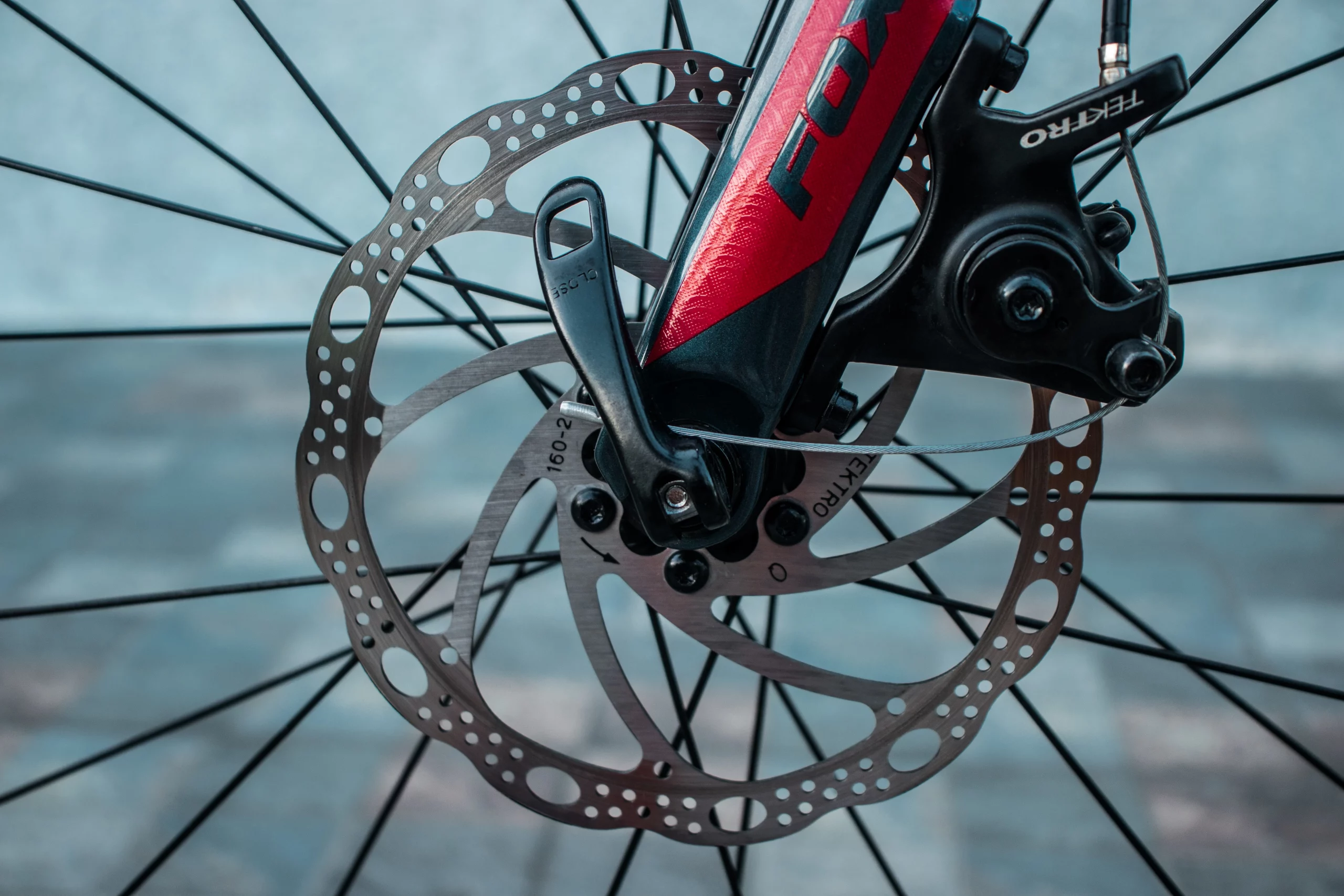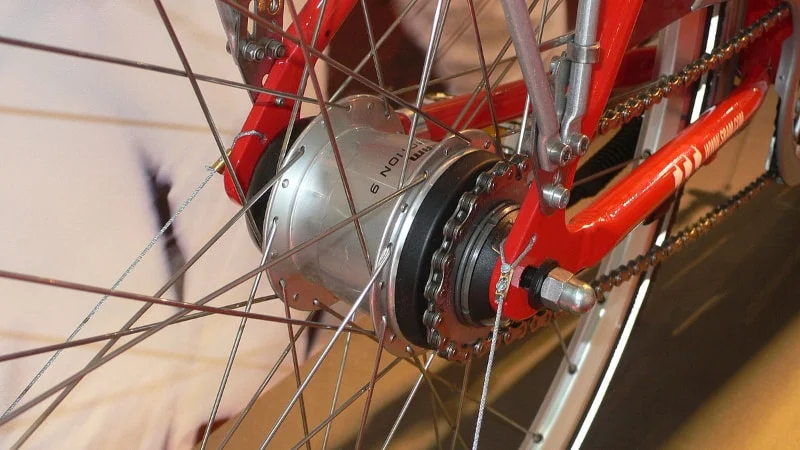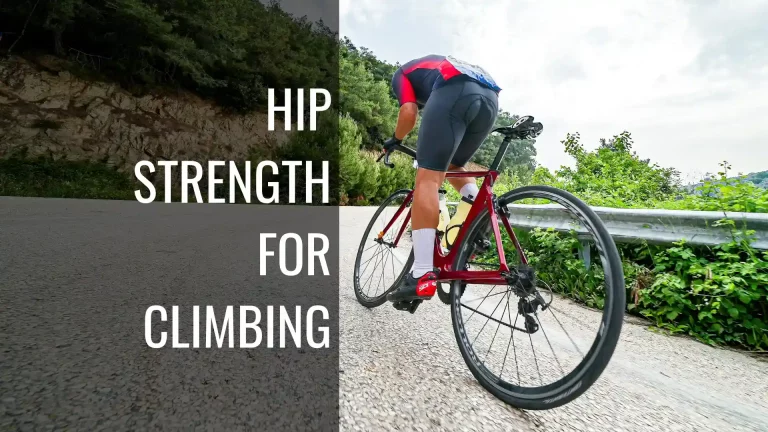
When it comes to choosing the right braking system for your bicycle, two primary options stand out: rim brakes and disc brakes. Each type offers unique advantages and considerations, making it essential to understand their differences and how they can impact your riding experience. In this post, we’ll delve into the world of bicycle rim brakes vs disc brakes, exploring their distinct features, performance, and suitability for various cycling disciplines, to help you make an informed decision when selecting the optimal braking system for your needs.
Table of Contents
A Quick History of Bike Brakes
The history of bicycle brakes is an interesting journey that has evolved alongside the development of bicycles themselves. Here’s a brief overview:
- Early Brakes (1800s): The first bicycles had no brakes at all, and riders would rely on their feet or resistance from the pedals to slow down. The spoon brake was one of the earliest designs, which involved a metal spoon-shaped piece pressing against the tire.
- Coaster Brakes (late 1800s): Coaster brakes were introduced in the late 1800s, which allowed riders to slow down by pedaling backward. This type of brake is still used on some modern bicycles, particularly cruiser bikes.
- Rim Brakes (early 1900s): Rim brakes began to appear in the early 1900s, with various designs emerging, such as the rod-actuated brakes and the plunger-style brakes. These brakes used pads that pressed against the wheel’s rim to slow down the bicycle.
- Caliper Brakes (1920s-1930s): Caliper brakes were introduced in the 1920s and 1930s, offering a more efficient and powerful braking system. These brakes used two pads that squeezed against the wheel’s rim from either side.
- Cantilever Brakes (1940s-1950s): Cantilever brakes emerged in the 1940s and 1950s, offering a more powerful braking option for bicycles. These brakes used a central pivot point with two arms that pressed brake pads against the rim.
- Drum Brakes: Drum brakes, which enclose a drum within the wheel hub and apply braking force when activated, were another early brake type. They were often used on utility or cargo bikes due to their durability and ability to perform well in various weather conditions.
- V-Brakes (1990s): V-brakes were developed in the 1990s and became popular on mountain bikes due to their improved braking power and ease of maintenance. They function similarly to cantilever brakes but provide increased mechanical advantage.
- Disc Brakes (late 1990s to present): Disc brakes were first used on mountain bikes in the late 1990s and have since become popular on various types of bicycles. These brakes use a rotor attached to the wheel hub and a caliper with brake pads that squeeze against the rotor to slow the bicycle down.


Why Some Riders Prefer Disc Brakes?
Disc brakes have gained popularity among cyclists for several reasons. Here are some of the key factors that make disc brakes a preferred over other types of braking systems:
- Increased Stopping Power: Disc brakes generally provide more stopping power than traditional rim brakes, especially in wet or muddy conditions. This can be particularly advantageous for mountain biking or riding in inclement weather.
- Consistent Braking Performance: Disc brakes are less affected by rim wear and debris buildup compared to rim brakes, which can lead to more consistent braking performance over time. This reliability is appreciated by riders, especially in demanding riding situations.
- Modulation: Disc brakes offer better modulation, meaning riders can more precisely control the amount of braking force applied. This allows for smoother braking and finer adjustments, particularly useful in technical terrain or during fast descents.
- Compatibility with Wider Tires: Disc brakes don’t require a brake track on the rim, allowing for wider tires to be used without sacrificing braking performance. This versatility is appreciated by riders who prioritize comfort, traction, and stability.
- Minimal Rim Wear: With rim brakes, braking forces are applied directly to the wheel rims, causing wear over time. Disc brakes, on the other hand, exert braking force on a separate rotor attached to the wheel hub, reducing wear on the wheel rims and potentially prolonging the lifespan of the wheelset.
- Better Performance in Varied Conditions: Since disc brakes apply braking force at the wheel’s hub, they are less affected by wet or muddy conditions that can reduce the effectiveness of rim brakes. This makes disc brakes a reliable choice for riders who frequently encounter inclement weather.
- Maintenance and Adjustability: While disc brakes require periodic maintenance, they are generally easier to adjust and maintain than rim brakes. Additionally, hydraulic disc brakes offer self-adjustment as the brake pads wear down, reducing the need for frequent manual adjustments.
While disc brakes may come with some added weight and complexity, their numerous advantages make them an appealing choice for riders seeking enhanced braking performance and reliability in various cycling conditions.
Why Some Riders Prefer Rim Brakes
Despite the growing popularity of disc brakes, rim brakes, considered a more traditional option, are still preferred by some riders for a variety of reasons:
- Weight:Rim brakes are generally lighter than disc brakes, which can be a significant factor for cyclists looking to minimize the overall weight of their bike, such as competitive road cyclists or those who frequently ride uphill.
- Aerodynamics: Rim brake systems typically have a lower profile than disc brake calipers, contributing to better aerodynamics. This advantage is particularly relevant in road cycling, where minimizing drag can enhance speed and efficiency.
- Cost: Rim brake systems are often less expensive than disc brake systems, both in terms of initial purchase and maintenance. This affordability can be attractive to budget-conscious riders or those who prefer a simpler, more cost-effective setup.
- Ease of Maintenance: Rim brakes are generally easier to maintain and repair than disc brakes. Adjustments, pad replacements, and wheel changes are often simpler and require fewer specialized tools, making rim brakes more accessible to DIY mechanics and riders who prefer to do their own maintenance.
- Tradition and Familiarity: Many cyclists grew up riding bikes equipped with rim brakes and feel comfortable and familiar with their operation. For some riders, particularly older cyclists or those who have been riding for many years, there’s a sense of nostalgia or loyalty to rim brakes.
- Compatibility: Rim brakes are compatible with a wide range of wheelsets and frames, including older bikes and certain niche disciplines where disc brake compatibility may be limited or unnecessary.
- Race Regulations: In some competitive cycling events, particularly road racing, rim brakes are still the standard due to regulations imposed by governing bodies. Riders participating in these events may prefer rim brakes to ensure compliance with race rules and avoid potential penalties.
- Simplicity: Rim brake systems have fewer components and moving parts than disc brakes, which can contribute to a cleaner aesthetic and simpler overall bike setup. Some riders appreciate the minimalist design and straightforward functionality of rim brakes.
Although rim brakes may not offer the same level of stopping power or performance in adverse weather conditions as disc brakes, their lightweight design, simplicity, and lower cost make them an appealing choice for riders with specific preferences or needs.
FAQ On Disc and Rim Brakes
Can I install disc brakes on on my cycle with rim brakes?
Unfortunately disc brakes require specific components and mounting options on the bike. The disc brake caliper needs to be attached to the frame in some way (fork in the front, and seat stay or chain stay in the back). These have to come with the bike and cannot be installed after-market. You also need the wheels to have the brake-disc mounting hub. This along with the brake caliper is what gives disc brakes its stopping power.
What is the difference between mechanical and hydraulic disc brakes?
Both are disc brakes, but the method of applying the braking power is different. Mechanical disc brakes use a brake cable to put pressure on the calipers to make contact with brake disc to make the bike stop. Hydraulic brakes use a special brake fluid to apply pressure to the brake calipers to come in contact with the disc brakes to stop the bike. Mechanical disc brakes are cheaper than hydraulic as they are simpler to setup and adjust than disc brakes. But disc brakes have a better brake feel and modulation that some find easier to fine-tune. Take a look at our bike brake adjustment post for more information on the different cycle brakes.
Strong Brakes for Fast Riding
The choice between rim brakes and disc brakes ultimately depends on your cycling preferences, riding conditions, and priorities. While disc brakes offer superior stopping power, consistent performance in various weather conditions, and better modulation, rim brakes remain a solid choice for riders seeking a lightweight, simple, and more affordable option. By carefully considering the advantages and potential limitations of each braking system, you can make an informed decision that best aligns with your cycling needs and enhances your overall riding experience.
Safe Riding!
Please check out my other posts on common cycling terminologies and the Poseidon X gravel bike FAQ. We also recorded a related podcast on injuries and prevention.



